Leaving your beloved dog at home while you head to work can be a source of guilt and worry. The sight of those hopeful eyes and the concern for their well-being are understandable. However, the solution to a happy, occupied dog while you’re out lies in a curated selection of engaging toys.
These boredom-busting wonders are designed not only to entertain your furry friend but also to provide essential mental stimulation and physical activity. Prepare to see your dog’s excitement levels soar as we explore interactive puzzle toys, treat-dispensing marvels, and captivating chew toys that will transform their time alone into a delightful adventure. Investing in the right toys is key to ensuring your dog remains happy and out of mischief.
The Importance of Keeping Dogs Engaged
The challenge of keeping your dog entertained while you’re at work is a common one for many pet parents. The answer often lies in choosing toys specifically designed to occupy them, such as interactive puzzles and treat-dispensing options. These toys tap into a dog’s natural instincts, providing a rewarding outlet for their energy and intellect.
Beyond mere distraction, these toys play a crucial role in preventing boredom-related destructive behaviors, reducing anxiety, and promoting overall canine well-being. A mentally stimulated dog is a happier, calmer dog, making your return home more pleasant for both of you. For dogs who are particularly energetic or prone to chewing, exploring interactive dog toys for aggressive chewers can be particularly beneficial.
Engaging Interactive Puzzle Toys
Toys that feature interactive puzzles are an excellent way to engage your dog’s mind. These clever designs often involve hiding treats, challenging your dog to problem-solve their way to the reward. This mental workout keeps them focused and significantly reduces the likelihood of them feeling anxious or missing their human companions while you’re away at work.
Dog Treat Turbine – All For Paws Interactives
The All For Paws Interactives Dog Treat Turbine is a captivating spinning food dispenser that transforms your dog’s kibble into an engaging, all-day playtime experience. This toy keeps them mentally stimulated and entertained as they work to retrieve the treats, making mealtime a fun challenge.
Key Features:
- Adjustable difficulty level to suit your dog’s intelligence.
- Keeps your dog actively engaged as they figure out how to dispense treats or kibble.
- Encourages slower eating habits for better digestion.
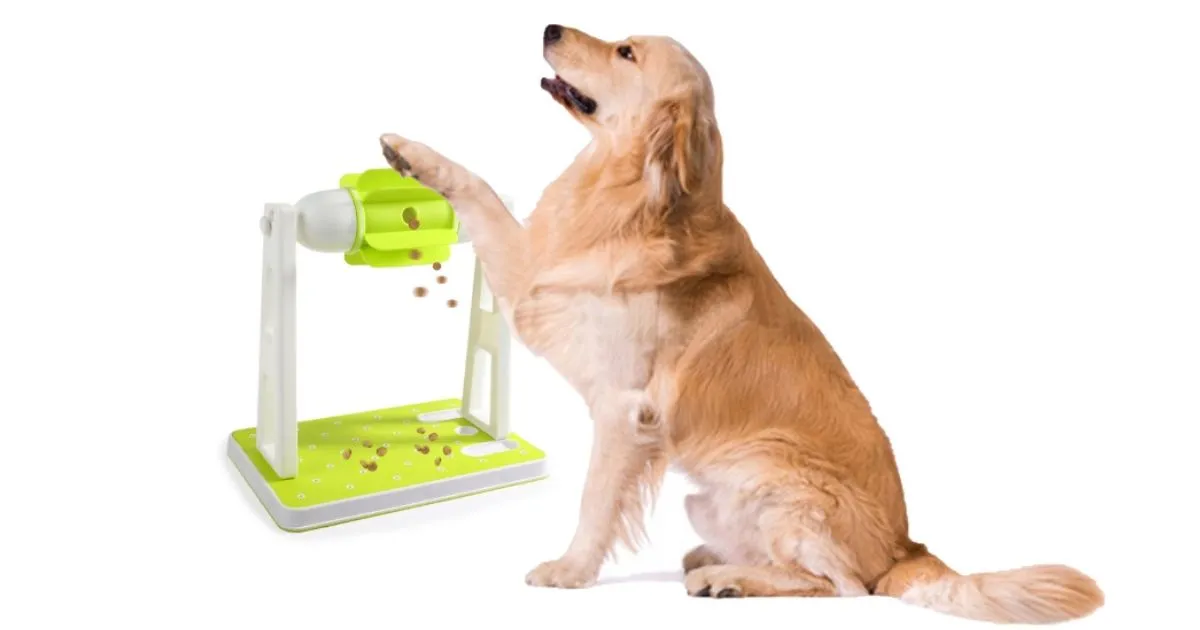 All For Paws Interactives Dog Treat Turbine
All For Paws Interactives Dog Treat Turbine
Flip’N’Slide – All For Paws Bone Appetit
The Bone Appetit Flip’N’Slide presents a challenging puzzle toy with moderate difficulty levels, making it suitable for dogs of varying skill sets. Its cleverly designed treat-hiding compartments and interactive nature challenge your pet’s problem-solving abilities, keeping them thoroughly occupied.
Key Features:
- Flip and slide compartments to satisfy a dog’s natural foraging instincts.
- A non-slip base ensures stability, preventing the toy from moving around.
- Removable treat dispensers allow for treats to be hidden in multiple locations, increasing the challenge.
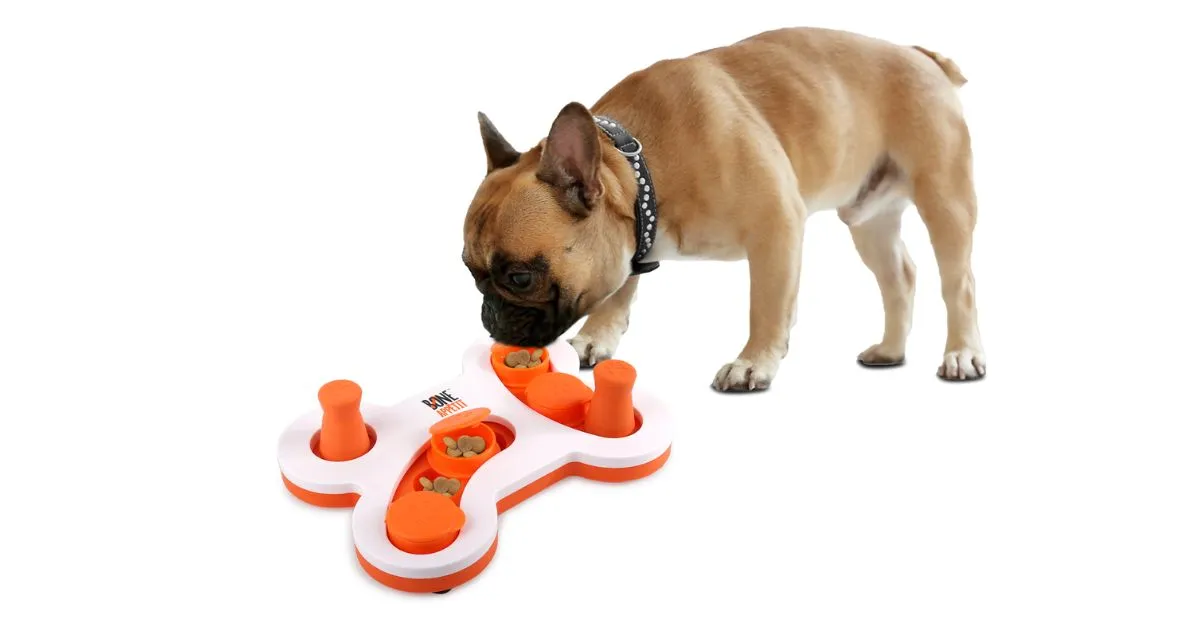 All For Paws Bone Appetit Flip
All For Paws Bone Appetit Flip
Enjoy the Meal – All For Paws Interactives
With the All For Paws Interactives Enjoy the Meal toy, your dog’s problem-solving skills will be put to the test through its flip-open and slide treat compartments. This engaging toy also features removable treat dispensers, enabling you to hide treats in various spots for your pet to discover and enjoy. This type of toy is excellent for preventing boredom and curbing destructive behavior.
Key Features:
- Removable treat dispensers for versatile treat hiding.
- Flip and slide compartments catering to natural foraging instincts.
- Effectively reduces boredom and prevents destructive behaviors.
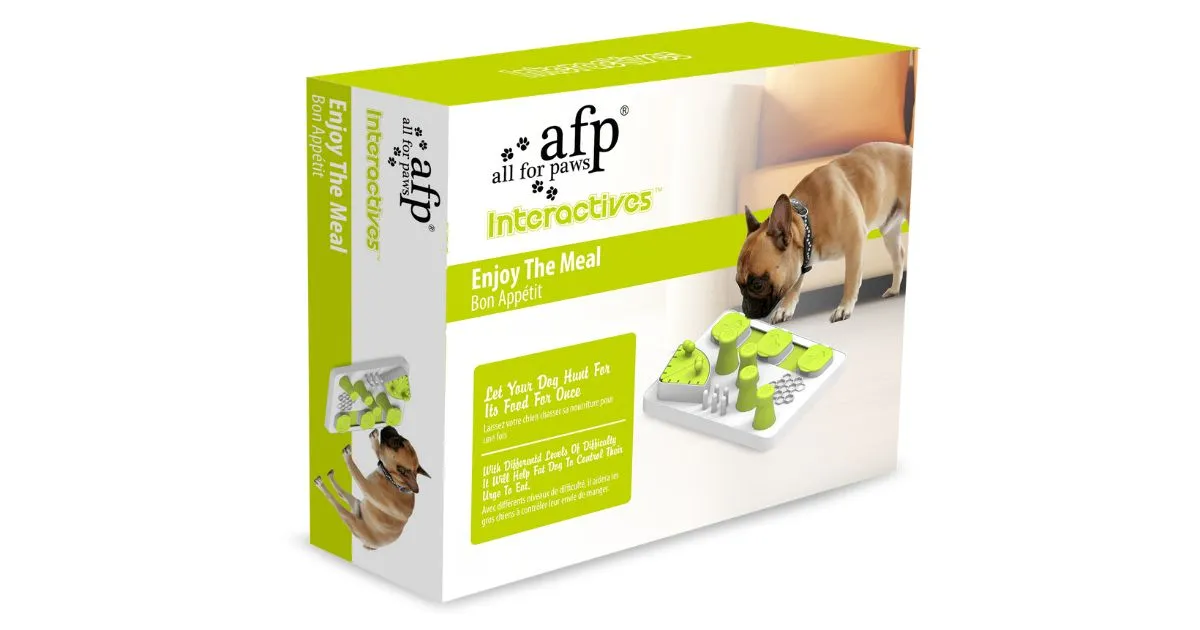 All For Paws Interactives Enjoy The Meal
All For Paws Interactives Enjoy The Meal
Stimulating Treat-Dispensing Toys
For a canine companion whose eyes light up at the mere mention of treats, treat-dispensing toys are often the perfect solution. These toys add another layer of mental engagement by combining playtime with the satisfying reward of a snack. Dogs must learn how to best release the hidden goodies from within these durable toys, offering both cognitive exercise and tasty motivation. For those with powerful chewers, exploring best and safest chew toys for dogs is a good starting point.
Classic Dog Toy – KONG
The KONG Classic dog toy is a pinnacle of pet entertainment. It can be filled with food and treats, providing your dog with hours of engagement as they work to retrieve them. Its unpredictable bounce during playtime offers simultaneous physical exercise and cognitive stimulation, making it a versatile choice.
Key Features:
- Hollow rubber design is perfect for stuffing with canned dog food or other dog-safe fillings.
- Ultra-durable rubber construction promotes healthy teeth.
- The unpredictable bounce entertains a dog’s mind and strengthens cognitive skills.
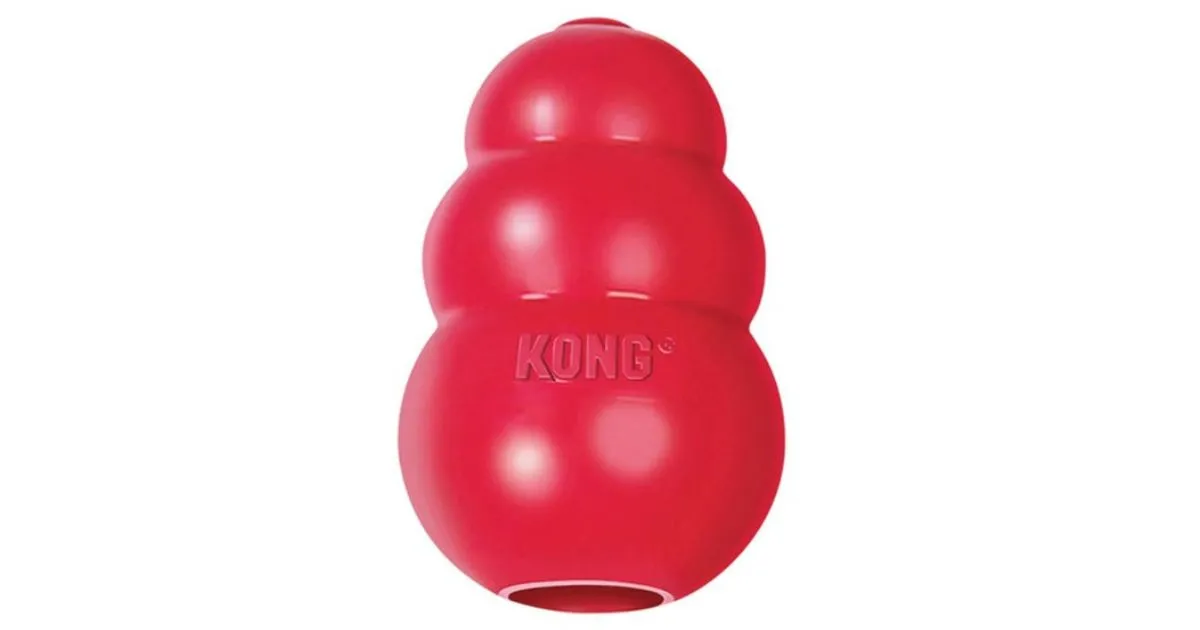 KONG Classic
KONG Classic
The Power of Fetch Toys
Fetch toys are an excellent way to keep your dog entertained while you’re at work, stimulating their physical and mental energy and providing a healthy outlet for their natural instincts. Interactive fetch toys allow your furry friend to play and stay active, effectively reducing boredom and anxiety during your absence. For larger breeds, consider dog chew toys for large dogs to ensure durability and safety.
Fetch ‘N’ Treat 2nd Gen – All For Paws Interactives
The Fetch ‘N’ Treat 2nd Gen is an ingenious solution for dog owners who are away from home for extended periods. This interactive pet accessory allows your dog to engage in a fun game of fetch even when you’re not there to participate.
Key Features:
- Automatic ball release mechanism eliminates the need for human interaction.
- Treats and a ball are dispensed each time the ball is returned.
- Provides excellent physical exercise and mental stimulation for your dog.
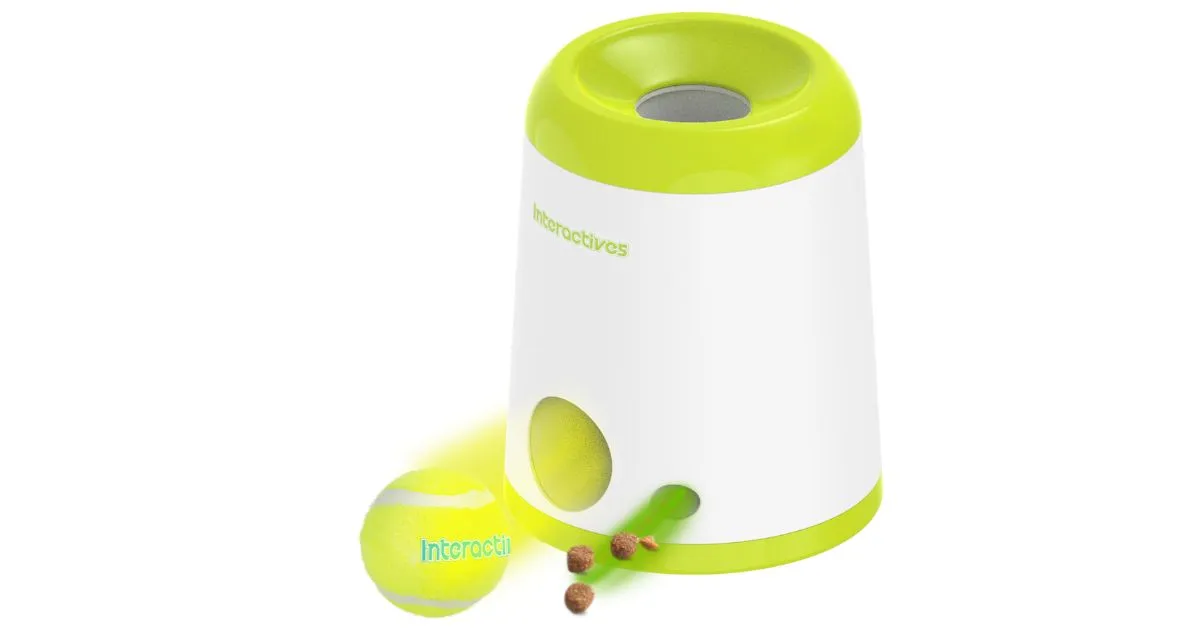 All For Paws Interactives Fetch
All For Paws Interactives Fetch
Harnessing Scent and Tracking Games
Dogs possess an extraordinary sense of smell, significantly more powerful than that of humans. Tracking games and treat-hiding toys effectively utilize this natural ability, offering endless entertainment as pups sniff out concealed treasures. The All For Paws Dig It Sunflower Sniffer Mat and the All For Paws Dig It Squirrel Treat Mat offer playful ways to hide dog food, fulfilling your dog’s natural foraging instincts and keeping them busy while you’re at work. Exploring these can also help dogs who tend to chew through everything, as it redirects their focus.
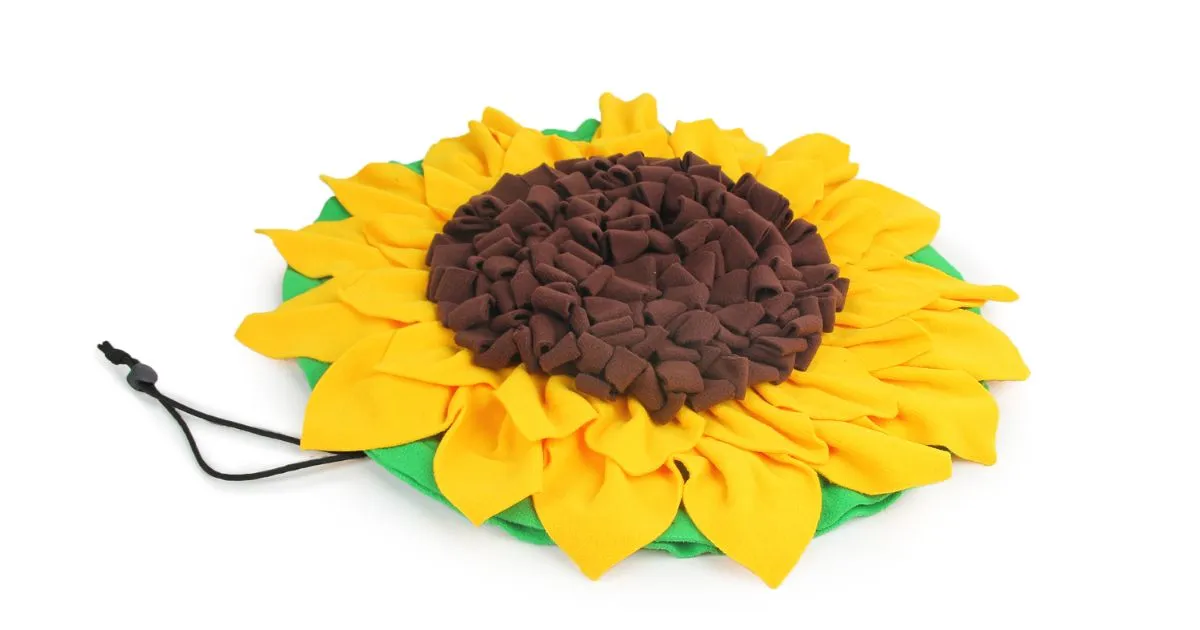 All For Paws Dig It Sunflower Sniffer Mat
All For Paws Dig It Sunflower Sniffer Mat
Discovering What Works Best for Your Dog
Every dog is unique, so it’s crucial to experiment to discover your dog’s personal preferences. Some dogs may gravitate towards squeaky plush toys, while others might enjoy tough, chewable ropes. Balancing self-play items like puzzle toys with those designed for interaction, such as tug-of-war ropes, ensures there will always be a suitable option available, whether you’re home or away. For dogs with a propensity to destroy toys quickly, consider looking into tough dog toys for heavy chewers.
Ian’s Tip: Select treat-hiding toys that engage a dog’s natural foraging instincts to keep your dog busy playing while you’re at work, promoting mental stimulation and providing effective pet entertainment.
FAQs about the Best Dog Toys to Keep Dogs Busy While at Work
How can I keep my dog entertained while I’m at work?
Invest in a variety of interactive toys, puzzles, and treat-dispensing toys to keep their minds occupied. Regularly rotating these toys will help maintain your pup’s interest and prevent boredom.
What toys will keep a dog busy for hours?
Durable chew toys, complex puzzle feeders, and mentally stimulating games are excellent options that can keep dogs engaged for extended periods. For dogs who need constant mental engagement, consider resources like best dog toys for dogs that chew through everything.
How do I keep my dog entertained during the day?
In addition to engaging toys, consider ensuring your dog gets sufficient playtime before you leave, arranging for a midday visit from a dog walker or pet sitter, or even enrolling them in doggy daycare.
What do people do with dogs while at work all day?
Most pet parents ensure their dogs have access to food and water, comfortable resting spots, and a selection of entertaining and safe toys. Some owners also utilize interactive pet cameras to check on their dogs remotely.
Ian’s Wrap-Up
Finding the Best Dog Toys To Keep Them Busy while you’re at work is paramount for their happiness and overall well-being. By providing them with stimulating and interactive toys, you can transform their alone time into moments of joy and crucial mental exercise. Whether it’s challenging puzzle games, robust chew toys, or interactive treat-dispensing gadgets, these toys will keep your canine companion entertained and content throughout the day, keeping them out of mischief! By investing in their playtime, you’ll be rewarded with an enthusiastic, tail-wagging welcome every time you return home.
We understand the importance of keeping your pet happy, healthy, and entertained, even when you can’t be there. If you’re searching for the best dog toys to keep your dog busy while at work, you’ll find exceptional pet care products at Zach’s Pet Shop!
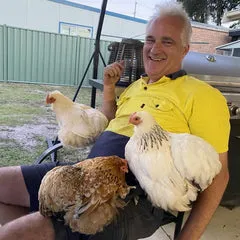 Pet Expert – Ian Hamblin
Pet Expert – Ian Hamblin
About Ian
Ian Hamblin is a respected pet enthusiast and the driving force behind Zach’s Pet Shop, a trusted name in the Australian pet industry. With an impressive track record of nearly 15 years, Ian has consistently supplied high-quality pet products to Australians, earning their trust and loyalty.
